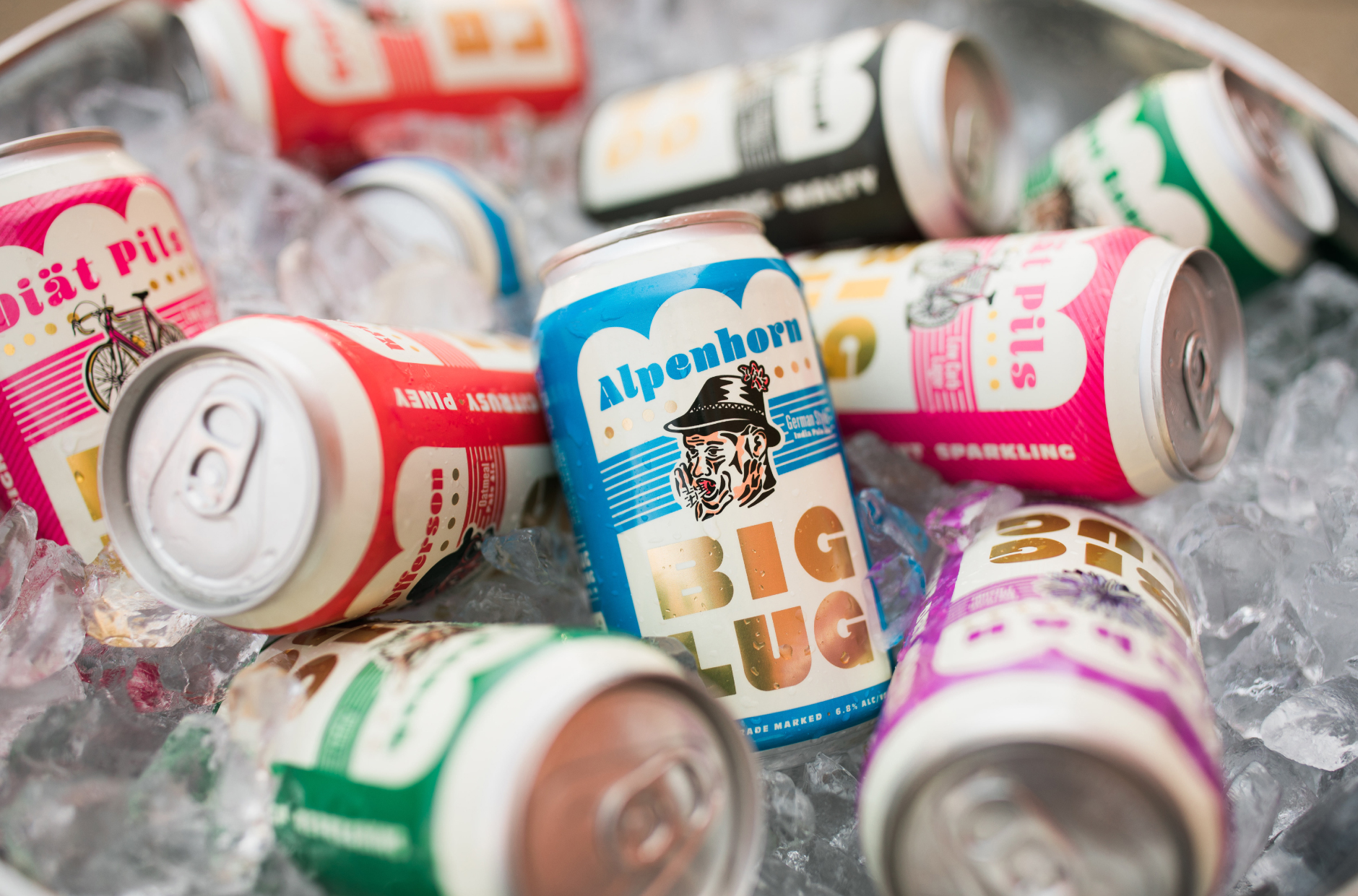HOW TO CONSISTENTLY COMMUNICATE YOUR BREWERY’S VALUES THROUGH WORDS
‘Brand voice’ is how you consistently communicate your values and personality through words, no matter the channel or audience. Understanding your voice is an oft-overlooked piece of the brand foundation process. Whether people simply stop short after fleshing out the brand’s broader visual language, or just think of it as marketing, it represents a missed opportunity to connect with customers. Doubly so if you’ve already put in the work to understand your brand essence and positioning.


Irreverent messaging helped Big Lug Canteen (Indianapolis, IN) stand out from a sea of Indiana brewpubs. Learn more about how we helped position them here.
How can we avoid this and make sure that everything we’re putting out into the world works to tell a broader story? How can we make sure it all has the same tone and personality? For now, let’s explore how to shape your own brewery’s brand voice.
-
1
Define your brewery’s core values
What do you stand for? What are you unwilling to compromise on? What do you believe and pursue every day? How is your beer different? These are all compelling and should inform your brand voice and communication pillars. And luckily, you already hammered them out in Chapter 2.
-
2
Where will you be speaking?
You need to get a sense of where people will come in contact with your brand and let the medium itself drive how you deliver your messaging. A blog, for example, can be an intimate place to share long-form writing and photos to give people a look inside your business. Instagram, on the other hand, can be a fun, quick way to show the faces behind your company. If you’re doffing your rubber boots and presenting at a conference, or even a tap takeover, consider how you dress and how you tell your brewery’s story. Mesh tank top? Khaki cutoffs? A few ideas, from us to you.
Common touchpoints (places and times you interact with your customers) include: social media / website / blog / packaging / print materials / merch / tap truck / growlers and drinkware / coasters
Often overlooked touchpoints include: keg collars / merch (beyond logo’d apparel) / brewery way showing and custom signage / custom jockey box
-
3
Who are you talking to?
Who’s your audience, and what role do you play in their lives? This process starts with your customers and can extend to distributors and other accounts. While all of your communication needs to be consistent, a distributor may be looking for more specific information than a customer.
For example: the compelling brand story behind a new beer belongs on a promotional poster to go up in a bar, while a distributor may need a folder and sales sheets that break down quantitative info like your pricing and production schedule. While the general consumer may not need so much in-depth info, your distributor still needs to know the story behind your brewery and the beer itself (name, style, etc.) and how that plays into your larger brewery’s brand narrative. They have to sell the stuff, after all.
-
4
Deciding on a tone of voice
This is where you start to form your overall tone of voice. One of the best questions to frame this decision is to go back to when you framed your brewery’s personality; if your company were a person, what kind of attitude would it have? It doesn’t have to be a specific person, though sometimes it can be; think Sam Calagione, Jim Koch, or James Watt.
One of our favorite examples is Big Lug Canteen (Indianapolis, IN). Craft Beer can be such a
sanctimonious industry, with overly serious men crafting beer in dark brewpubs. But Big Lug? They make fun of themselves. A lot. If you swing by their brewery, you’ll see irreverent words like “Decent” and “Alright” to describe their beer and food. This approach is realized across social media as they share and even promote negative Untappd reviews.A few voices to try on: irreverent / serious and staid / counter cultural / lifestyle-oriented (outdoorsy, tech, foodie, etc.) / proud / hopeful / sentimental / etc.
How would a new tone of voice alter how you announce a new beer you’re tapping this weekend? Or, that you’re collaborating with another brewery?
If you don’t define your tone, it can be easy to lose consistency in your messaging and communication as your brewery grows. This gets even worse as you bring new people (communication directors, sales team, etc.) into the mix. Get your brewery’s brand voice defined and on paper now and check back regularly to ensure you’re speaking the right language.

